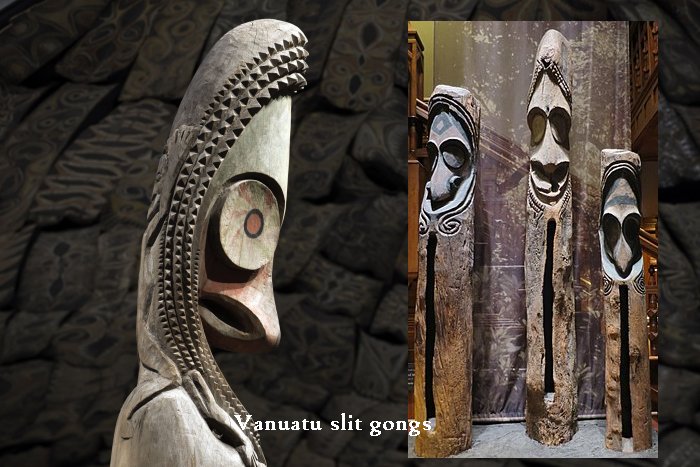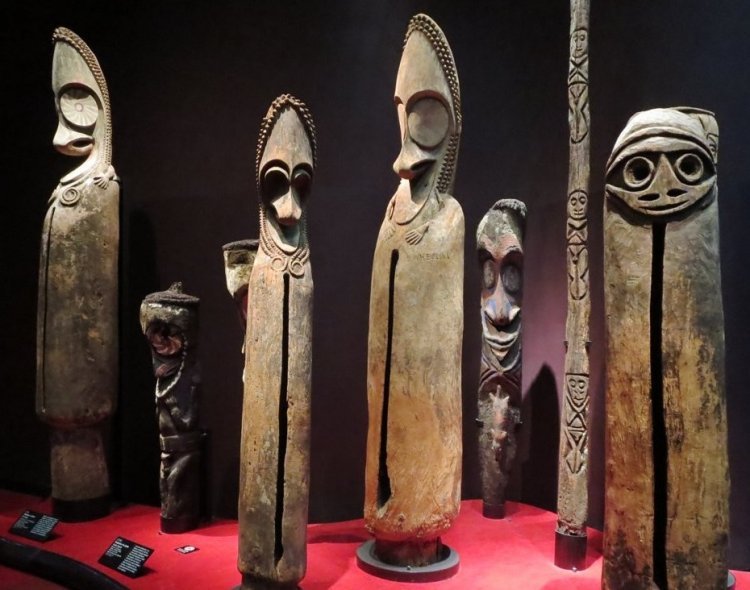Curious Alien-Looking Slit Gongs Figures From Vanuatu Allowed Villagers To Communicate
A. Sutherland - AncientPages.com - These remarkable artifacts known as slit gongs are truly extraordinary in their appearances. They can be found primarily on the islands, Ambrym and Malakula in the archipelago of Vanuatu, in the South Pacific Ocean.
Ambrym is a volcanic island in Malampa Province in the archipelago of Vanuatu, located in the South Pacific Ocean was named by Captain Cook, who anchored off there in 1774.
In order to communicate between the villages people created the slit gongs and used them with several “gong languages” made up of beats and pauses, which were used to send important messages.
Under suitable atmospheric conditions, their sound can carry for miles through the forest and, in rare instances, across the water to neighboring islands.
The slit gongs - alien-looking figures with large heads - were carved from the trunks of large breadfruit trees, and then hollowed out to create a resonating chamber with a narrow slit-shaped aperture. The edges of the slit gongs are struck with club-like wood beaters, generating deep, loud tones.
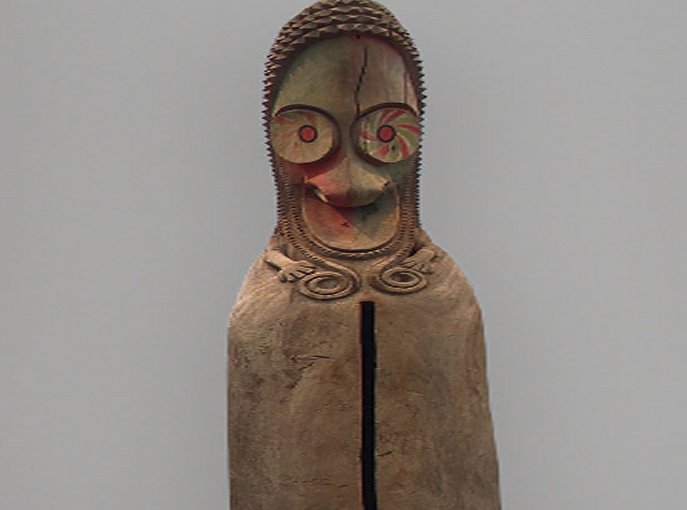
Vanuatu Slit Gong - Tin Mweleun (commissioned by Tain Mal) from the village of Fanla on Ambrym Island was commissioned in the 1960s. Image credit: The Met Museum
The towering slit gongs of northern Vanuatu are considered to be the largest freestanding musical instruments on earth.
The picture above presents Vanuatu slit gong decorated with the spiral motifs painted on the eyes. They are are representation of metan galgal, the morning star. Small arms and spirals depicting sacred
pig tusks appear on either side of the face, which is surrounded by projections depicting hair. The long vertical slit represents the mouth, through which the ancestor's "voice" emerges as sound whenever the gong is played.
The slit gongs were and also are) not only used as a communication device but also as an important instrument at festivals and other meetings of villagers, where a number of the gongs form a unique, musical orchestra, which along with drummers, produce unusual and very complex rhythms.
According to ancient myths a primordial woman invented the slit gong, but she did not produce a sonorous meaning or beauty with it, so the men took it over to show what it could be done.
Many slit gongs have been created anonymously and today they cannot be attributed to their respective artists.
Written by – A. Sutherland - AncientPages.com Senior Staff Writer
Copyright © AncientPages.com All rights reserved. This material may not be published, broadcast, rewritten or redistributed in whole or part without the express written permission of AncientPages.com
Expand for referencesMore From Ancient Pages
-
 Mystery Of The Ourang Medan – What Happened To The Ship Of Horror?
Featured Stories | Mar 7, 2022
Mystery Of The Ourang Medan – What Happened To The Ship Of Horror?
Featured Stories | Mar 7, 2022 -
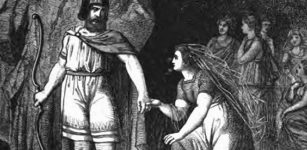 Freya And Her Lovely Husband Odr, God Of Summer Sun And Passion In Norse Mythology
Featured Stories | Dec 3, 2018
Freya And Her Lovely Husband Odr, God Of Summer Sun And Passion In Norse Mythology
Featured Stories | Dec 3, 2018 -
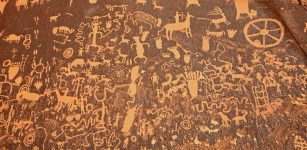 Newspaper Rock Art: Ancient Indian Petroglyphs Tell 2,000-Year-Old Story Of Utah
Civilizations | Nov 28, 2018
Newspaper Rock Art: Ancient Indian Petroglyphs Tell 2,000-Year-Old Story Of Utah
Civilizations | Nov 28, 2018 -
 Mysterious Ancient Tomb Reveals ‘Impossible’ Cosmic Connection – Wrong Identity – Part 1
Featured Stories | Oct 11, 2020
Mysterious Ancient Tomb Reveals ‘Impossible’ Cosmic Connection – Wrong Identity – Part 1
Featured Stories | Oct 11, 2020 -
 Human Skeleton Dated To Parthian Era Unearthed At Tepe Ashraf In Iran’s City Of Isfahan
Archaeology | Jul 25, 2020
Human Skeleton Dated To Parthian Era Unearthed At Tepe Ashraf In Iran’s City Of Isfahan
Archaeology | Jul 25, 2020 -
 Why Was The Spartan Army So Successful?
Ancient History Facts | Apr 15, 2022
Why Was The Spartan Army So Successful?
Ancient History Facts | Apr 15, 2022 -
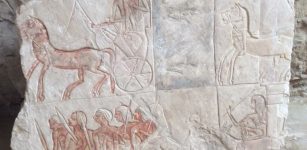 Unusual Scenes Painted On The Walls Inside Egyptian Tomb Of General Iwrkhy – Discovered
Archaeology | May 10, 2018
Unusual Scenes Painted On The Walls Inside Egyptian Tomb Of General Iwrkhy – Discovered
Archaeology | May 10, 2018 -
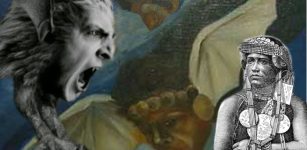 Chonchon ‘Tue Tue’ Bird With Human Head Brought Bad Omens To Places It Haunted In Beliefs Of Mapuche Indians
Featured Stories | Mar 12, 2024
Chonchon ‘Tue Tue’ Bird With Human Head Brought Bad Omens To Places It Haunted In Beliefs Of Mapuche Indians
Featured Stories | Mar 12, 2024 -
 7,000-Year-Old Male Skeleton In Garment Decorated With Sea Shells, Red Deer Teeth Identified In France
Archaeology | Mar 9, 2017
7,000-Year-Old Male Skeleton In Garment Decorated With Sea Shells, Red Deer Teeth Identified In France
Archaeology | Mar 9, 2017 -
 Ancient DNA Reveals Surprises About Life Of Early Africans
Archaeology | Feb 24, 2022
Ancient DNA Reveals Surprises About Life Of Early Africans
Archaeology | Feb 24, 2022 -
 Civita di Bagnoregio – Magnificent 2,500-Year-Old Etruscan City In The Sky Is Struggling To Survive
Featured Stories | Jun 23, 2021
Civita di Bagnoregio – Magnificent 2,500-Year-Old Etruscan City In The Sky Is Struggling To Survive
Featured Stories | Jun 23, 2021 -
 Rare Viking Boat Burial At Kiloran Bay In Colonsay, Scotland Remains A Fascinating Find
Featured Stories | Mar 6, 2023
Rare Viking Boat Burial At Kiloran Bay In Colonsay, Scotland Remains A Fascinating Find
Featured Stories | Mar 6, 2023 -
 Tribe Recalls Ancient Contact With An Extraterrestrial In The Amazon Jungle And A Strange Beam Of Light
Featured Stories | Jun 25, 2020
Tribe Recalls Ancient Contact With An Extraterrestrial In The Amazon Jungle And A Strange Beam Of Light
Featured Stories | Jun 25, 2020 -
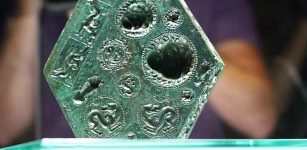 Unique 2,000-Year-Old Hexagonal-Shaped Bronze Matrix Of Sarmizegetusa Regia, Romania
Artifacts | Jan 7, 2016
Unique 2,000-Year-Old Hexagonal-Shaped Bronze Matrix Of Sarmizegetusa Regia, Romania
Artifacts | Jan 7, 2016 -
 Dolmen de Soto: Unique Millennia-Old Underground Structure Remains A Puzzling Enigma
Featured Stories | Feb 10, 2022
Dolmen de Soto: Unique Millennia-Old Underground Structure Remains A Puzzling Enigma
Featured Stories | Feb 10, 2022 -
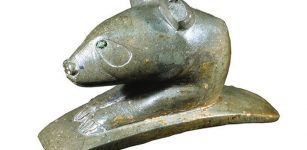 Use Of Tobacco Pipes By Hopewell People Tells A New Story
Archaeology | Jun 28, 2021
Use Of Tobacco Pipes By Hopewell People Tells A New Story
Archaeology | Jun 28, 2021 -
 Earliest Record Of An Aurora Discovered In The Bamboo Annals
Archaeology | Apr 15, 2022
Earliest Record Of An Aurora Discovered In The Bamboo Annals
Archaeology | Apr 15, 2022 -
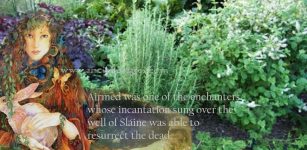 Airmid: Irish Goddess Of Healing And Herbs And One Of The Tuatha Dé Danann
Celtic Mythology | Feb 2, 2018
Airmid: Irish Goddess Of Healing And Herbs And One Of The Tuatha Dé Danann
Celtic Mythology | Feb 2, 2018 -
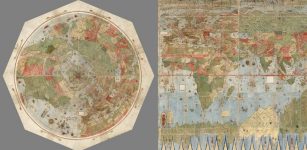 Unique Ancient Map Depicting The Earth As Seen From Space Restored Digitally
Archaeology | Dec 18, 2017
Unique Ancient Map Depicting The Earth As Seen From Space Restored Digitally
Archaeology | Dec 18, 2017 -
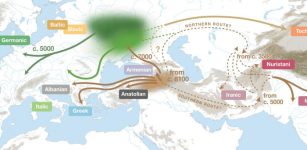 New Insights Into The Dawn Of The Indo-European Languages
Linguistic Discoveries | Jul 27, 2023
New Insights Into The Dawn Of The Indo-European Languages
Linguistic Discoveries | Jul 27, 2023

